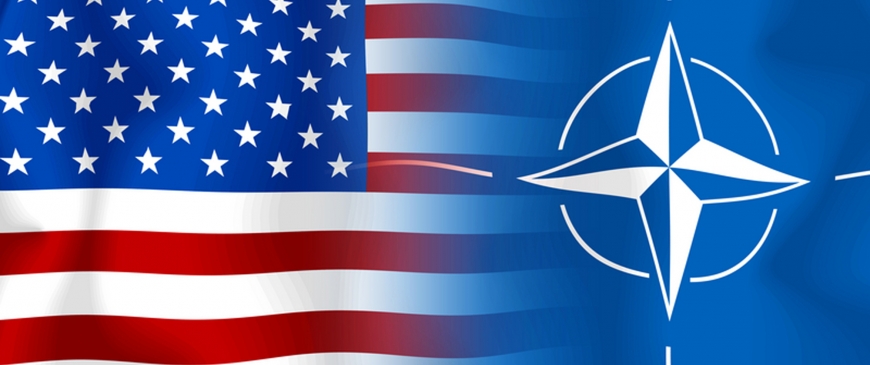
Nato summit: How will the Alliance handle Trump today?
Today, Donald Trump will be attending the Nato summit in Brussels. All signs point to a Europe eager to appease him: they will likely keep meetings short, impress him with a new (if much delayed) headquarters, and scramble to present their achievements in the fields of defence spending and counter terrorism activities—the two topics Trump cares about most.
The importance of a good reception, which might prevent Trump from making any more destructive comments, cannot be overstated. If European or Russian leaders doubt America’s commitment to Nato’s article 5 mutual defence guarantee—or Trump’s willingness to show solidarity with his allies more generally—then the credibility of Nato’s deterrence strategy will suffer immeasurable damage.
A lack of leadership
Yet even if Trump does not say or tweet anything in Brussels that actively undermines Nato’s raison d’être, the absence of American leadership is a loss to the Alliance.
Trump has called into question whether the US would defend its allies in the event of a Russian attack if they had not “fulfilled their obligations” to the US. (Defence Secretary James Mattis quietly countered the president’s comments, calling the American commitment to Nato’s Article 5 “ironclad.”)
In the meantime, Europeans rely too heavily on North American support in the east. Of four battlegroups that Nato has sent to reinforce its deterrent posture against Russia, only two are led by Europeans.
Rather than just waiting for Trump to tell them what to do, European allies should work to create a distinctive European approach to the security challenges the Alliance faces, and thus give meaning to the idea of a “European pillar” in Nato. They should pay attention, in particular, to improving Nato-EU co-operation. Likewise, they must invest in capabilities that enable them to maintain their commitment to Article 5, even if they are faced with weaker American support.
But European allies also know better than to think that increasing budgets will solve the problem of European defence capability shortcomings. If nations increase their spending to 2 per cent of GDP without more European co-operation on procurement and development, they risk merely increasing duplication and redundancy.
The European way
So, while it is important to demonstrate quantitative progress to President Trump, Europeans in Nato should focus on what we might call a “European way” of increasing their defence profile.
There are several ways they might do this. Firstly, European allies can jointly acquire capabilities that they can use for Nato and non-Nato purposes. A good example is the recent initiative by the Netherlands, Luxembourg, Belgium, Germany, and Norway to acquire new tanker aircraft to reduce Europe’s reliance on the United States for air-to-air refuelling capabilities.
Second, the Europeans can ensure that Nato also benefits from the EU’s big new project to include a budget for defence in the next multiannual financial framework. Of the 28 Alliance members, 22 are members of the EU as well (and some of the others have association agreements that allow them to access EU funds). Nato should strive for greatest possible coherence and co-ordination between its own defence planning efforts and those of the EU.
President Trump has said that he wants the allies to do more counterterrorism operations in the Middle East; those allies for whom Russia is the main threat have acquiesced in making counter-terrorism central to the Brussels summit.
Notably, Trump wants Nato to become a formal member in the anti-IS coalition. Yet while Allies may agree to Trump’s request at the summit in order to send a political message of support, many European leaders have already expressed their concern about giving Nato a bigger role in the conflict.
An alternative “European” way for the Alliance to get involved in stabilising Europe’s southern neighbourhood would be to invest more in defence capacity building and training of security forces in Afghanistan and Iraq.
In joint theatres of operation, Nato should also work together with the EU on defence capacity building. The Alliance can benefit from the European Union’s experience with wider security sector reform support, and set up more structured co-operation.
Barriers to co-operation
The meeting in Brussels will be the first Nato Summit since Nato and the EU signed a joint statement on co-operation in Warsaw last year. The political will among many European allies to strengthen Nato-EU co-operation is encouraging, but the relationship still faces many challenges.
First, the EU and Nato still struggle to overcome their very different cultures: for example, the EU Military Committee is not integrated into EU foreign policy-making in the way that the Nato Military Committee is in Nato policy-making.
Second, EU-Nato co-operation is overshadowed by the rapidly deteriorating EU-Turkey relationship.
Third, it is highly unlikely that the new US administration will invest in strengthening Nato-EU relations. Faced with Trump’s dismissive attitude towards both the EU and Nato, there is a risk that European leaders hedge against US disengagement from Nato by building up parallel structures in the EU.
European leaders and American presidents have not always seen eye-to-eye in the past, but this first summit with Trump carries unique risks for the alliance.
The Europeans need to convince an ultra-sceptical president that Nato and the EU are effective security providers in Europe—and they need to look as though they believe it.
There is no point in waiting for the United States to take the lead: Nato benefits from Europeans taking a more active role in shaping the Alliance’s policies.
Sophia Besch is a research fellow at the Centre for European Reform.
